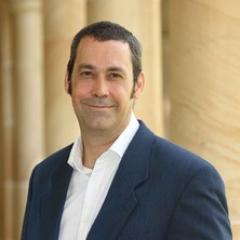Biosolid flow, separation and activity in anaerobic lagoons
Overview
Wastewater treatment lagoons are widespread in Australia and Asia, and represent a low-cost and safe alternative to high energy, capital intensive conventional activated sludge treatment. They also represent a pathway to more sustainable wastewater management, enabling capture of organics to produce renewable electricity through anaerobic digestion at around 25% of the cost of alternatives.
As a consequence, they are and will continue to be the most prolific route to controlled anaerobic digestion. However, there are often critical operational problems that can hinder optimal application of lagoon processes, related to management of solids and optimal management of the biology in conjunction with hydraulics.
Despite widespread application, optimal design and operation of anaerobic lagoons is not straightforward. Whilst there is extensive operational data, the complex behaviour within lagoons means that design is largely uninformed, while the only way that operators can control lagoons is via the desludging protocol. Operators can’t deal reliably with start-up (when the sludge is still being established) and variable flow that may move or wash out active sludge.
This project aims to develop a fundamental model of the complex, non-steady state flow behaviour in anaerobic lagoons. The model will be used to develop new operating procedures and designs for large municipal, industrial and agricultural anaerobic lagoons.
The approach requires a range of complementary activities that include:
- development of a combined model of anaerobic lagoons,
- pilot and full-scale lagoon sampling,
- measurement of biological properties,
- measurement of rheological properties,
- studies of bubble transport and fluidisation, and
- development of rheological models of creep and scouring.

Funding
- Melbourne Water
- Barwon Water
ARC LP170100257
Collaborators
- The University of Melbourne
- RMIT University
Project Outcomes
This project aims to develop and validate a fundamental model of biosolid flow, solid-liquid separation, biological activity, heat transfer and gas transport that will significantly advance the understanding of anaerobic lagoon operation. It will allow accurate process predictions of gas production and sludge migration for the first time.
The key research questions to be answered are:
- Where in the lagoon does the sludge form; in particular the biologically-active sludge, and what are the roles of local shear and consolidation forces on sludge movement and re-suspension?
- How do biological processes and local environmental conditions impact the physicochemical behaviour of sludge?
- What are the limitations of biological rate associated with mass transfer through dense sludge?
- How do gas bubbles form and transport through the lagoon, in particular through the sludge?
Project members
Other members:
- Chris Carney
- Peter Wardrop


